In 1976, Robert By Khang was lost in a city where no one spoke Hmong, where no one could tell him that he’d gotten on the wrong bus or how he could get home to his wife and baby.
That city was Sacramento.
The Hmong community agrees that By Khang was the first of its ranks to ever move to the capital city. That’s partly because of the fighting he survived during the Vietnam War. By Khang was among the 30,000 Hmong recruited by the U.S. Central Intelligence Agency to battle North Vietnamese soldiers and Lao Communist insurgents on the Ho Chi Minh Trail. They would come to be remembered as “the Secret Army.”
When the United States ended its war effort in 1975, By Khang joined a mass exodus of Hmong forced out of Laos by Communist soldiers seeking revenge. It was a vicious, running purge that claimed thousands of his peoples’ lives.
By Khang decided his best bet to make it to the U.S. was by carrying his army battalion identification. If caught with it, he’d be executed. The gambit paid off when his family got to Thailand: By Khang’s veteran status led to him being in the first group of Hmong interviewed for possible immigration. But rather than being sent to Hawaii, where his brother planned to sponsor him, a paperwork mix-up got him assigned to a Vietnamese sponsor in Sacramento. By Khang remembers stepping off a plane at night and, in a blink, finding himself in a motel room on Stockton Boulevard.
The following months were dizzying. He felt cut off and alone. Later, when a local refugee assistance center hired him as Sacramento’s first Hmong resettlement specialist in 1982, he’d be tasked with helping other refugees rebuild their lives. The work left him a key witness to the fact that, when war-scarred Hmong arrived, there were no government agencies or nonprofits trying to help them get counseling, or even explain the possibility of therapy for what they’d been through.
It’s a story that second and third-generation Hmong Americans know well, a public health legacy many of them—along with a number of medical experts—believe puts their elder community at a heightened risk for depression, isolation, paranoia, gambling addiction, domestic strife and suicide.
Dr. Carolee Tran, a psychologist who specializes in treating refugees from the Vietnam War, says there’s a serious issue with undiagnosed post-traumatic stress disorder among elders who escaped that violence. Other clinicians in the area also agree. At a community forum in May, Norbee Xiong, a Hmong American mental health counselor in Sacramento, said 90 percent of his patients are Hmong, and the most common diagnoses among the elders are PTSD and major depression. At the same event, Dr. Pachida Lo, a psychiatrist who treats Hmong clients for Kaiser in South Sacramento, said stigma in the community around seeking mental health services prevents many from reaching out until they’re on the verge of taking their lives.
Now, as California’s resettlement agencies try to avoid repeating the mistakes of the past with a new wave of refugees coming from Syria, a number of young Hmong Americans in Sacramento are reaching across the generational divide to try get their elders the help they never received.
But is it too late?
Imprint of nightmares
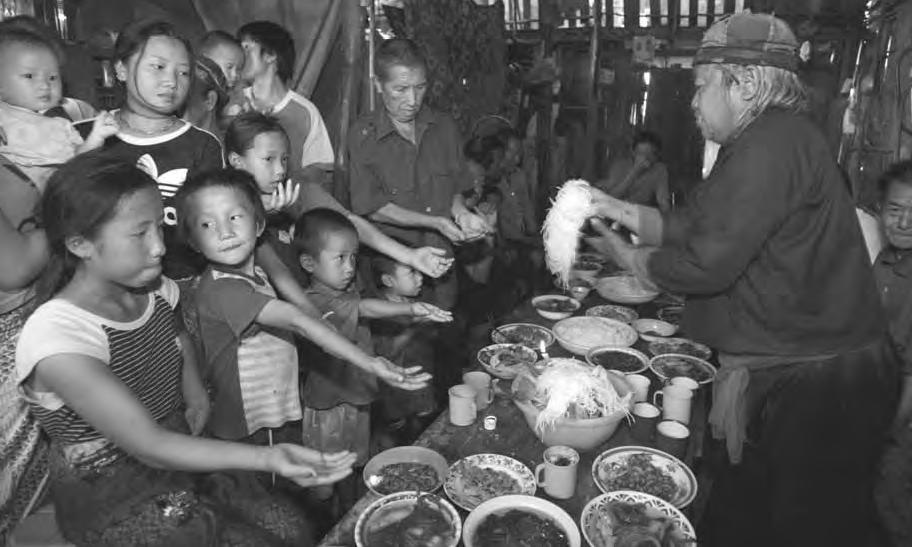
For Chao Xiong, the story’s always connected to a voice calling through the signal current of a lost cassette tape.
She was 16 in 1977, trudging through the jungles of Laos with the shell-shocked remnants of her village. The war had ended, and the Hmong faced indiscriminate killings at the hands of the North Vietnamese or reprogramming camps at the hands of the Lao Communist militants. Chao Xiong’s group was on a trail bound for Thailand when communist soldiers suddenly emerged from the trees, rounding them up at gunpoint. But Chao Xiong’s boyfriend didn’t surrender. He dashed through the woods and managed to escape. Months later, a fellow refugee handed Chao Xiong a cassette recorded by her boyfriend. She could hear his eager voice telling her he’d made it to Thailand and promising he’d come back to take her away from the carnage. Young hearts fill with hope easily, but in a matter of weeks, Chao Xiong received news he’d been shot to death.
Now, sitting in her living room in Rancho Cordova, she sighs and lowers her eyes thinking about it.
At a glance, few would guess at the memories Chao Xiong carries. She’s an independent Hmong woman recently retired from owning several restaurants in Citrus Heights and North Highlands. But Chao Xiong says she never forgot what happened during the war, a story emblematic of the reality that it wasn’t just Hmong soldiers exposed to trauma 40 years ago, but nearly the entire generation of survivors who now make up the elder community.
Chao Xiong had known fear and pain long before her boyfriend’s death. Bombs had fallen near her village since she was 7 years old. Its people were soon confronted by Communist raiding parties attempting to kill off any fit, healthy recruits for the Americans.
“You didn’t know when they were coming,” Chao Xiong remembered.
Chao Xiong’s father dug a bomb shelter into the side of a mountain trying to protect his children. Her mom hid supplies of rice around the forest, in case soldiers blocked them from getting home. Still, despite her parents’ best efforts, tragedy was coming. The battles and bombings were causing starvation. Chao Xiong’s mother fell ill because she was giving every scrap of food she had to her baby. She died when Chao Xiong was only 10. Her father got sick and died three years later.
As Chao Xiong and her siblings made their way south with other escapees, they heard stories of Hmong men in the jungle losing their minds from hunger. Reports went around of babies dying in their mothers’ arms. When they arrived at a refugee camp in Thailand, they discovered there was hardly any food. Chao Xiong and her sister were forced to work on embroidery all day long to earn enough money for a tiny amount of extra rice. Those days are seared into Chao Xiong’s brain.
“It’s a sad story,” she recalled. “We didn’t have parents, we didn’t have money. We suffered very badly.”
For Elk Grove Mayor Steve Ly, the first Hmong-American mayor in the United States, the effects that suffering had on the community’s elders has taken a long time to recognize. Even though Ly works as a youth counselor, he says it was years before he finally understood his parents had PTSD.
During the war Ly’s father, the late Capt. Youachao Ly, worked as a CIA operative for the U.S. Air Force Command. Youachao’s job included calling in enemy positions for air strikes and helping rescue downed American pilots in the hills of Laos. Ly now believes that Youachao constantly replayed those life and death missions in the jungle.
“For the entire time he lived in the United States, my dad was always in the military mindset,” Ly explained. “Everywhere that we went, he was always cautious. It almost seemed like he was paranoid—overly paranoid.Every time he heard or read about a crime that happened in our community, he would refer to that as the NVA [North Vietnamese Army]. It didn’t make sense at the time.”
The war’s mark on Youachao crystalized even more for his son when they’d go on hunting trips in the woods. Ly recalls seeing a transformation come over his father.
“Suddenly he’d be an entirely different person,” Ly said. “I understand it now, being in social work. He clearly was suffering from PTSD.”
And Youachao wasn’t the only one suffering. When the war ended, Ly’s mother, Tu Ly, was forced into Thailand’s Ban Vinai Refugee Camp, a place described by survivors as a cramped, filthy atmosphere filled with hungry bellies and people screaming from their nightmares. Steve Ly was born there and arrived in the United States when he was 4. For all his life, Ly noticed his mother’s odd habit of keeping all her clothes in suitcases. She had closets and dressers in the house they stayed in in California, but she never—never—used them. Ly says he didn’t pick up on “the clues” around this pattern until his mother learned about the Iraq War.
“She said to me, ‘There’s a war going on, we have to prepare to move,’” Ly remembered. “It was another aha moment for me. I thought, ‘Oh my gosh,’ that’s why everything she has is in a suitcase. She’s been preparing for this her whole life.”
Coping alone
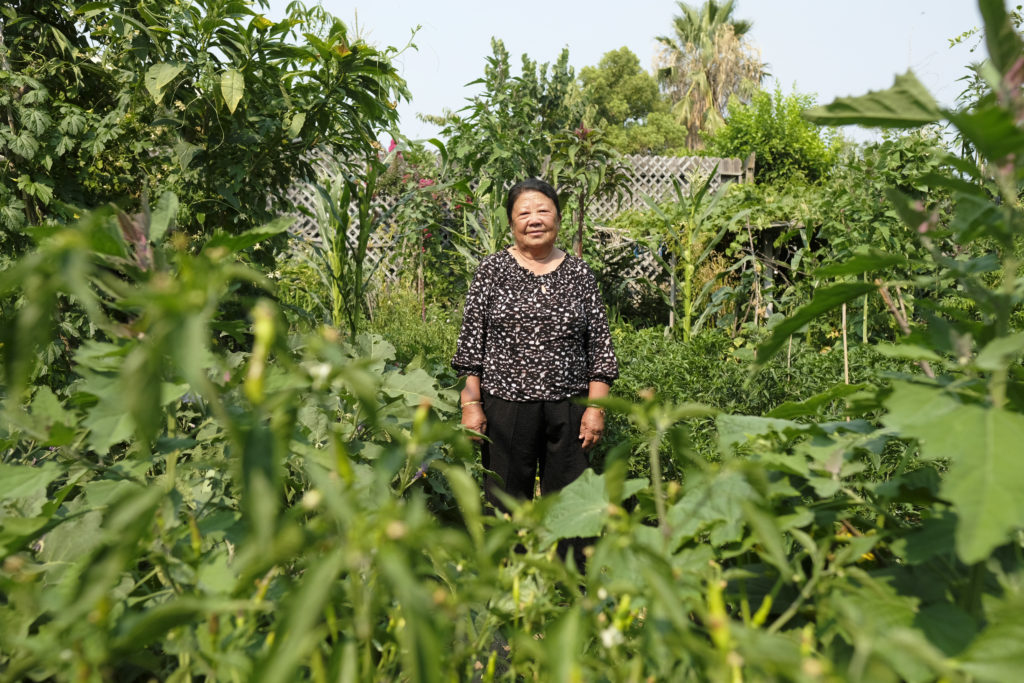
Every morning Mo Chao Yang steps into a hidden garden and wonders why she never got the chance to be educated—to learn to read and write. The spry 72-year-old with contemplative eyes may not be literate, but for decades she’s taught herself to master seeds, soils and sunlight and the ability to make anything grow. It’s a journey that’s led Mo Chao Yang to transform her North Sacramento yard into a colorful maze of blossoming life.
Wandering into the oasis, neighborhood car stereos and buzzing swamp coolers start to fade. It’s a scene that harkens to the Lao jungles Mo Chao Yang ran through as a girl. While she never realized her dream of schooling, her hard-learned instinct for survival is partly what cultivates this sanctuary. The garden helps keep her bad memories away.
And those memories run deep.
In 1961, Mo Chao Yang’s husband Boua Vang decided to fight alongside the Americans. Mo Chao Yang was left by herself with two toddlers in a war zone, her days spent chopping wood, growing food and foraging in the jungle for provisions. Then Communist soldiers started coming down from the mountains to terrorize her village. Mo Chao Yang remembers grabbing her children, rushing them into the forest.
Before the war ended, Boua returned home crippled from a landmine blowing off his foot. It was up to the young mother to manage her family through a desperate flight as Communist troops began their killing spree along the Mekong River. Mo Chao Yang still remembers the constant threat, the feeling of being hunted down.
Decades later, she combats those thoughts with the energy of her garden. It’s the main way of coping Mo Chao Yang’s had all these years. When she arrived in the United States in 1980, she says that there was no outreach or education about the health risks associated with trauma.
Her fellow Sacramentan, By Khang, is in the best position to understand why the outreach didn’t happened locally; though looking back, it’s hard for him to piece together, too.
By Khang had overcome his initial disorientation around the capital by 1977 and used his ability to speak some Lao to get a job washing dishes. He put all his extra time into learning English. He was eventually fluent enough that the Indo-Chinese Assistance Center hired him as a resettlement worker to help Hmong refugees arriving in Sacramento. After a year, the Lao Family Center in Santa Ana opened a Sacramento branch. The organization made By Khang its new director. He oversaw a team of resettlement workers for four years before taking a job with Sacramento’s branch of the International Rescue Committee, or IRC, for another decade.
By Khang says one of his toughest jobs for all that time was trying to keep Hmong refugees from being further traumatized by resettlement. He remembers the stress of not knowing how to purchase food he could cook. He recalls the week his baby came down with pneumonia and he didn’t know how get to a doctor. And of course, By Khang’s quick to recount getting lost on the bus and having no way to ask for directions. That happened to him twice.
“I was very, very homesick,” he said. “During that time, I cried about three times a day. … When you’re a refugee arriving in a new place, you don’t know anything.”
By Khang steered others through that confusion by getting them acclimated to the city, signing them up for Medi-Cal and making sure they could access basic medical services. As a resettlement worker, By Khang says no one advised him on trauma care. Though the mental health field had been studying the effects of war trauma since the early 1950s—with PTSD becoming an official diagnosis in 1980—By Khang doesn’t recall that knowledge getting impressed on resettlement professionals of the era.
“The Hmong didn’t seek that type of support because they didn’t know about it, or know to look for it,” he explained.
Similarly, long before Dr. Carolee Tran was an expert at counseling Southeast Asian refugees, she was aware of that history of non-treatment. That’s because Tran is a refugee herself, evacuated as a little girl from the fall of Saigon. Tran’s father, a commander in the South Vietnamese army, saw brutal fighting during the war. Her mother was forced on a heart-stopping flight from the Vietcong with her children. Yet when Tran’s parents arrived in the Bay Area, there was no effort to see if they needed help.
“There was nothing of the sort,” Tran said of mental health outreach. “There was not even [English as a Second Language]. Counseling was just the furthest thing on anybody’s mind. … There wasn’t even a symptom checklist.”
Tran stresses this legacy had consequences. In the 1990s, she and her husband, Hinton Ladson, M.D., conducted a study for the Robert Wood Johnson Foundation that compared PTSD rates in the general population to those in the Vietnamese refugee community. They determined that the rate of people suffering from PTSD in the general population was 3.5 percent, while the rate for their refugee subjects was more than double, at 7.5 percent.
Though the research focused on the Vietnamese, Tran says her work with the Hmong, as well as Cambodian refugees who escaped the Khmer Rouge, reveals common trends around trauma. All of these groups witnessed extreme violence or experienced a trauma from flight. Later, many, in raising children in the United States, dealt with disturbed family dynamics and abrupt intergenerational shifts in culture. Being targeted for racism, facing downward mobility and struggling to provide for families often caused low self-esteem, especially with men, which Tran has found can retrigger memories of the war.
“All of these issues [younger Hmong and Vietnamese bring up about elders], the depression, the anxiety, the domestic violence, the gambling addiction, they’re all valid concerns when it comes to trauma in refugees,” Tran said.
New generation, new reach
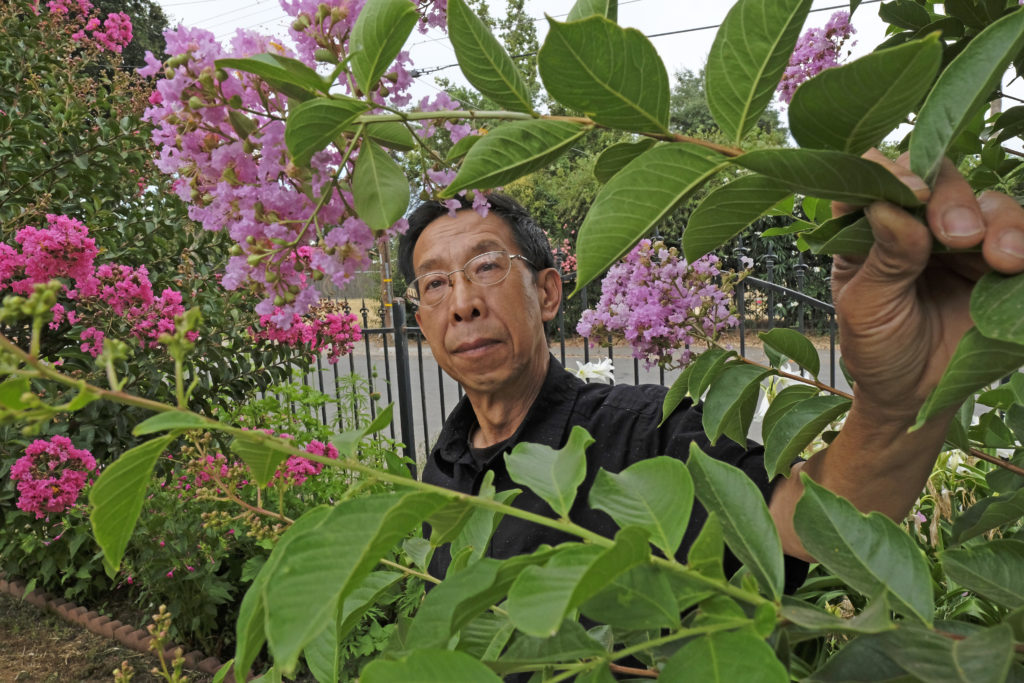
The sun faded over South Sacramento as Mee Yang carefully made her way onto the stage of a former church. She paused to glance at more than 90 of her fellow Hmong looking up at her. Mee Yang is an elder with a tiny frame but big personality. She’d been asked by the nonprofit Hmong Youth and Parents United to broach a dicey subject that night. She didn’t let them down. Mee Yang’s diminutive voice sounded through a PA system.
“I had feelings of craziness,” Mee Yang shared in Hmong; or at least, that’s how SN&R’s experienced translator phrased her words, the interpreter adding that the “craziness” term in Hmong has similar connotations as it does in English.
But if Mee Yang employed a frankness that was a little surprising to younger people in the room, her intention was not to stigmatize. Anything but: Mee Yang was sharing her story of how she’d overcome the considerable fear she’d felt about seeing a psychiatrist. She told the crowd she’d finally mustered the courage to visit the doctor, who then convinced her to try medication. In doing so, Mee Yang said, he’d made her feel much better. Mee Yang added that she’d now been taking medications for nine years.
She also shared that she’d convinced her reluctant husband to see a doctor. Mee Yang explained that both of them felt better and had rediscovered happiness and their love for each other.
Mee Yang ended her story by assuring the audience they didn’t need to be afraid to visit a counselor or psychiatrist. “There’s so many of us who have these issues,” she stressed.
Mee Yang was a key speaker at the Hmong Mental Health Forum in May. That’s what the gathering was called in English. The event had a different title in Hmong, which translated to “Finding Happiness Across Generations.” Its duel fliers highlight the simple fact that there’s no words in the Hmong language for “mental health services,” just as there are no words for “stigma,” “trigger warning” or “post-traumatic stress disorder.”
As the event got off the ground, two HYPU members laced those words in English through a presentation that was otherwise entirely in Hmong. After the women finished explaining a number of mental health topics, especially trauma, a panel discussion ensued that included a counselor, a psychiatrist, a forensic clinician and a family nurse practitioner, all of whom spoke to the audience in Hmong.
Pachia Lucy Vang, a Hmong American ethnographer, is a board member of HYPU. She was one of the volunteers who helped organize the gathering. Pachia said it’s the first event of its kind HYPU has hosted. She added that one of the challenges younger Hmong face when trying to discuss trauma-related illness with the elders involves a cultural expectation that it’s not the place of children to be advising parents and grandparents.
“The elders don’t always want to listen,” Pachia observed. “We have a lot of communications issues in general because the elders come from a completely different life experience.”
That said, Pachia and the HYPU board members were encouraged by the large, multigenerational turnout for their forum. It’s a beginning.
Pachia knows this grassroots effort to help the elders with their trauma coincides with a commitment from the region’s resettlement workers to not let another generation of traumatized refugees go undiagnosed. That’s because, until recently, Pachia worked for the local branch of IRC, one of the main groups on the front lines of helping families escaping the bloodshed in Syria.
Amy Watson, health manager for IRC in Sacramento, said her agency is now using a specific health screener when it interviews new arrivals, one that attempts to gauge emotional stress and PTSD. Watson added that the screener isn’t a requirement for IRC’s federal funding, but her team has chosen to use it because of how jarring and widespread the violence is in Syria.
“Oftentimes we have a Western idea of how these concepts play out, but they can be more complex,” Watson said of discussing trauma with the new refugees. “We sit down and talk with them about their experience.”
IRC is also hosting group discussions for refugees to describe American mental health concepts. If the arrivals decide they want counseling, they can access services through the county’s behavioral health department or through private therapists and clinicians accepting Medicaid. Watson noted that the Sacramento area is lucky to have a number of nonprofit groups donating funds for refugee counseling services.
Sysvanh Kabeo, chief of California’s Refugee Programs Bureau, said it’s critical for local resettlement workers to have a trauma plan because Sacramento County was the top refugee destination in California last year and is on track to hold that distinction again in 2018.
While IRC’s trauma outreach may rely heavily on Medicaid and impacted county services, it amounts to far more support than the Hmong elders had in the 1970s and early 1980s.
For the younger Hmong in Sacramento, that’s a history that can’t be erased, but it can be confronted. Mayong Vangthor is a Sacramento teacher running the Hmong Dual Language Immersion Program at Susan B. Anthony Elementary School. The first of its kind on the West Coast, it ranges from kindergarten to sixth grade with the aim at making Hmong American kids bilingual and bi-cultural. Mayong thinks support for the program is tied to a recent cultural renaissance in the Hmong community, a groundswell of enthusiasm in younger people to embrace their heritage rather than abandon it. She also believes, over time, the program will help the newest generation better relate to, and support, their elders.
“For one, they’ll be able to communicate with them,” Mayong pointed out. “It will help kids form real bonds with their grandparents, which makes the elders feel better and is really important to them. It’s going to build a bridge.”
And so, the program hinges on the power of education, a power that Mayong has heard about her whole life. Mayong’s mother is Mo Chao Yang, north Sacramento’s alchemist home gardener who survived the village raids, the rushing with her babies through the jungle, the hunger of the camps and the bewilderment of being a single-provider in a strange new land. Mo Chao Yang always dreamed of being educated, but her life was spent working as a housekeeper to support her children and disabled husband. She was determined her kids would have a different future. For Mo Chao Yang, community empowerment through education is still the Hmong’s best avenue for overcoming everything they went through, and everything they face.
“It’s important for us to help ourselves,” Mo Chao Yang said as she sat in the shade of her opulent garden. “Because as much as people help us, we have to help ourselves even more.”

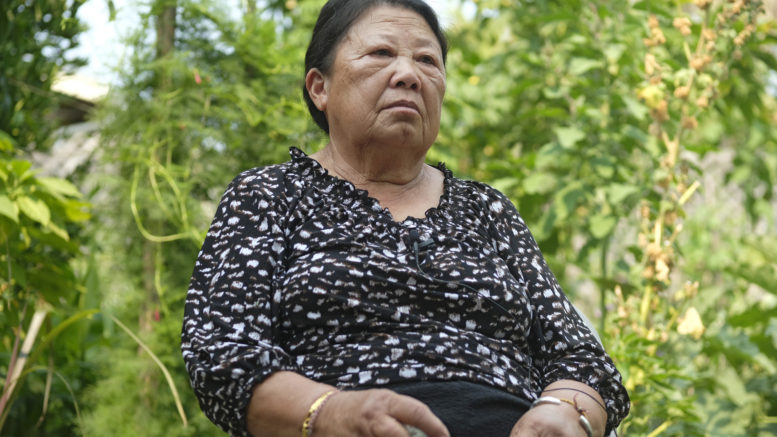


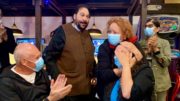
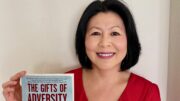
Be the first to comment on "After the war: Trauma still haunts California’s Hmong community"